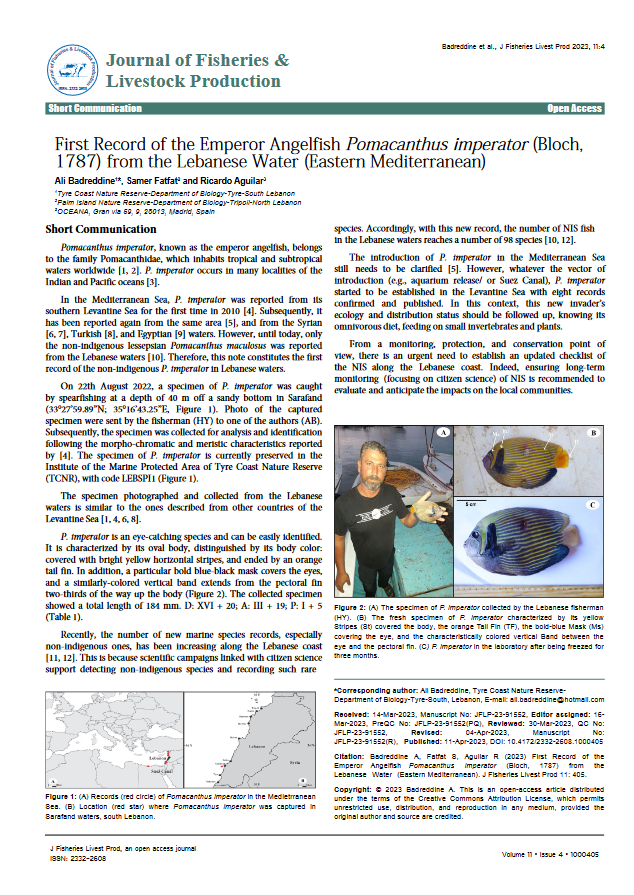Report | April 15, 2023
First Record of the Emperor Angelfish Pomacanthus imperator from the Lebanese Water (Eastern Mediterranean)
Pomacanthus imperator, known as the emperor angelfish, belongs to the family Pomacanthidae, which inhabits tropical and subtropical waters worldwide [1, 2]. P. imperator occurs in many localities of the Indian and Pacific oceans [3]. In the Mediterranean Sea, P. imperator was reported from its southern Levantine Sea for the first time in 2010 [4].
Subsequently, it has been reported again from the same area [5], and from the Syrian [6, 7], Turkish [8], and Egyptian [9] waters. However, until today, only the non-indigenous lessepsian Pomacanthus maculosus was reported from the Lebanese waters [10]. Therefore, this note constitutes the first record of the non-indigenous P. imperator in Lebanese waters.
On 22th August 2022, a specimen of P. imperator was caught by spearfishing at a depth of 40 m off a sandy bottom in Sarafand (33°27’59.89”N; 35°16’43.25”E, Figure 1). Photo of the captured specimen were sent by the fisherman (HY) to one of the authors (AB). Subsequently, the specimen was collected for analysis and identification following the morpho-chromatic and meristic characteristics reported by [4].
The specimen of P. imperator is currently preserved in the Institute of the Marine Protected Area of Tyre Coast Nature Reserve (TCNR), with code LEBSPI1 (Figure 1). The specimen photographed and collected from the Lebanese waters is similar to the ones described from other countries of the Levantine Sea [1, 4, 6, 8]. P. imperator is an eye-catching species and can be easily identified. It is characterized by its oval body, distinguished by its body color: covered with bright yellow horizontal stripes, and ended by an orange tail fin. In addition, a particular bold blue-black mask covers the eyes, and a similarly-colored vertical band extends from the pectoral fin two-thirds of the way up the body (Figure 2). The collected specimen showed a total length of 184 mm. D: XVI + 20; A: III + 19; P: I + 5 (Table 1).
Recently, the number of new marine species records, especially non-indigenous ones, has been increasing along the Lebanese coast [11, 12]. This is because scientific campaigns linked with citizen science support detecting non-indigenous species and recording such rare species.


